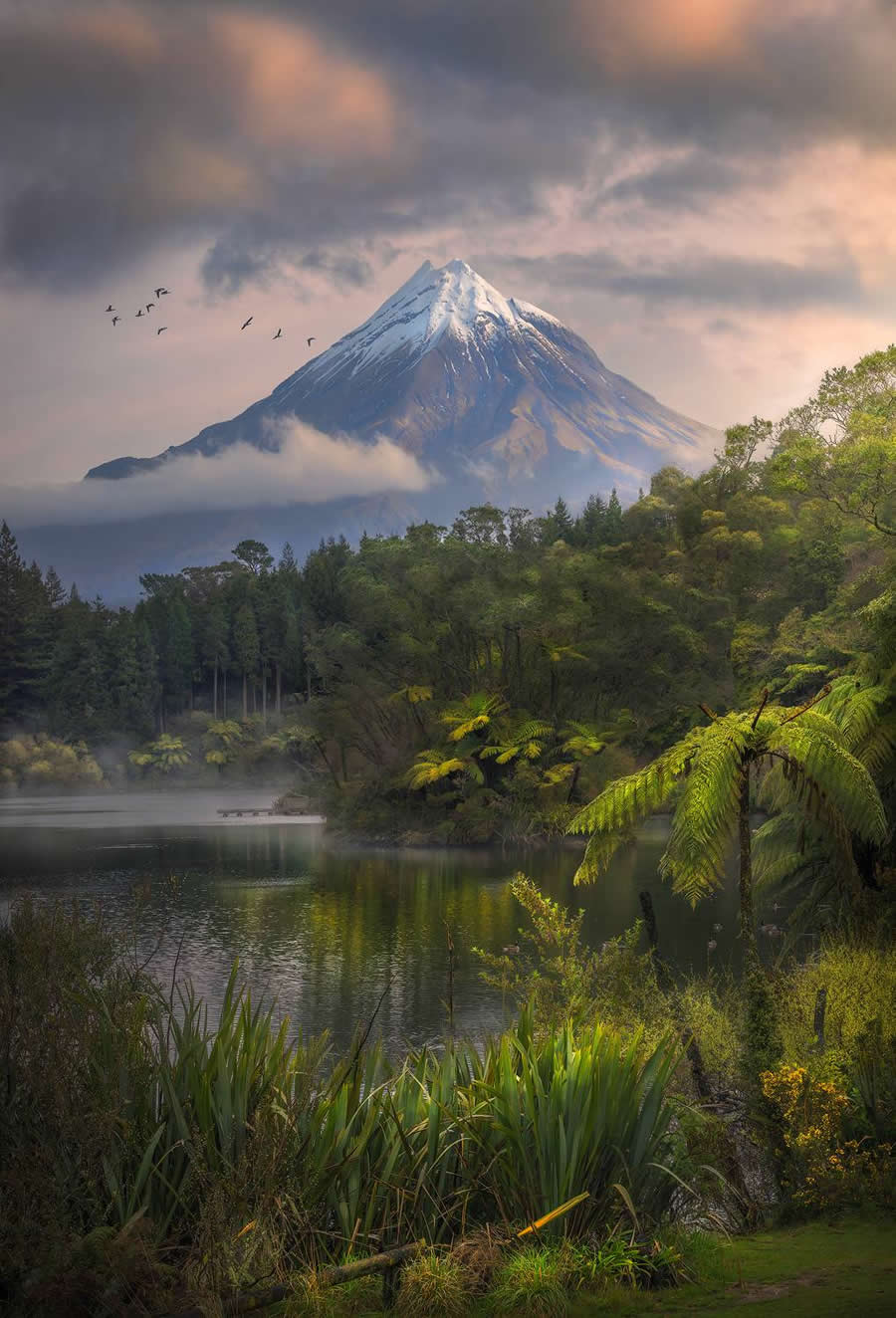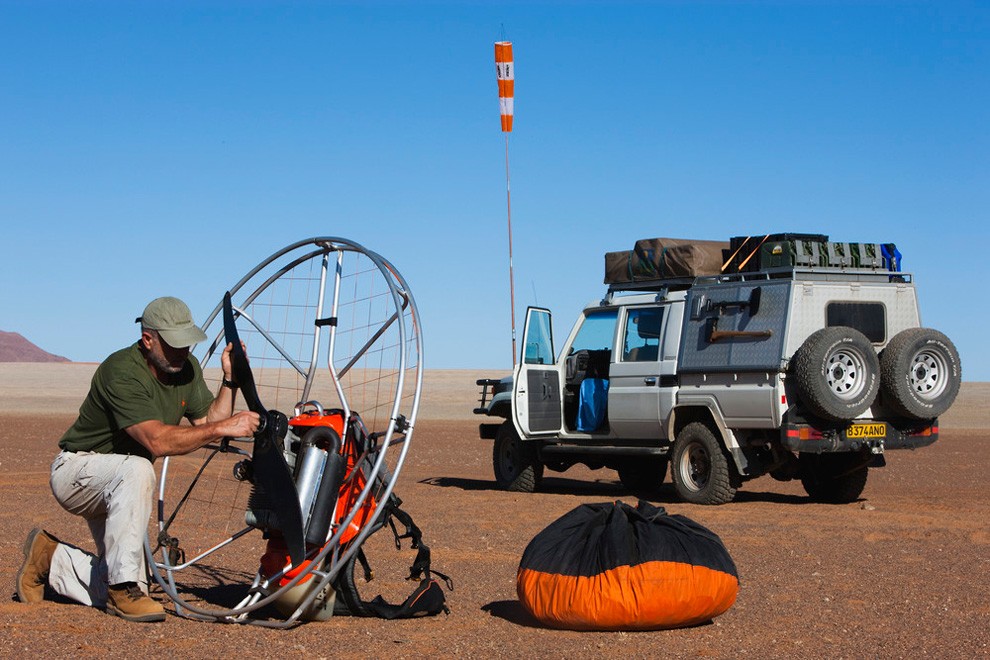Magnificent Landscape-Winning Photos from the 35 Photography Awards
1st Place Winner: “Photo” by Lukas Trixl

The 35 Photography Awards celebrate the world’s most breathtaking landscapes, showcasing 30 winning images that highlight nature’s beauty. Continue reading »
Spectacular Landscape Winning Images of the 2024 Nature Photography Contest
Winner: “Burning Flower” by Marek Biegalski

The 2024 Nature Photography Contest highlighted the magnificence of the natural world through stunning images of serene mountains, lush forests, starry skies, and glowing nocturnal scenes. Each photograph showcased the photographers’ exceptional ability to blend artistic vision with the untouched beauty of Earth’s landscapes. Continue reading »
Spectacular Winning Photos from The Northern Lights Photographer of the Year 2024
When Aurora Meets Milky Way by Jānis Paļulis, taken in Bauska, Latvia

The Northern Lights Photographer of the Year collection from Capture the Atlas showcases the most stunning aurora photos captured over the past year. With increased solar activity as we near the solar maximum, the northern and southern lights have lit up unexpected locations, including Arizona, California, Spain, Chilean Patagonia, Namibia, and Madeira, where they’ve rarely been photographed before. Continue reading »
Spactacular Landscape Winners from the 1839 Photographer of the Year Awards
Photographer of the Year: “The Great North” by Enrico Curti

The 1839 Photographer of the Year Awards honored the art of landscape photography, highlighting the remarkable talent of photographers worldwide. Continue reading »
Namibia From Above

Theo Allofs taking his paraglider engine apart after flight over the desert, in October, 2014, in the Namib Desert, Namibia. A photographer has captured a bird’s eye view of the stunning Namib Desert from a paraglider. Theo Allofs travels the world taking stunning pictures of untouched landscapes from a unique perspective. Soaring 300 metres above ground, Theo shot the yellow sand dunes, dry red river beds and remote townships in Namibia. His use of a paraglider, which can soar to 1400m above ground, also allowed him to follow a flock of ostriches and a herd of zebras. Theo’s unusual method of transport meant he could explore the far reaches of the desert and minimise the disruption to wildlife. (Photo by Theo Allofs/Barcroft Media)
Continue reading »
Dogs Ease Namibia’s Cheetah-farmer Conflicts
Gobabis, Namibia – Winding through the parched Namibian farmland, Bonzo, an Anatolian shepherd dog, has a singular focus: protecting his herd of goats from lurking predators. He pads along, sniffing the air and marking the scrubby landscape, just like a bodyguard ready to ward off any threat to his charges, which he considers family. “They’re not pets. They’re not allowed to be pets”, said Bonzo’s owner farmer Retha Joubert. The breed descends from ancient livestock dogs used thousands of years ago in what is now central Turkey. And they not only save sheep and goats, but have handed a lifeline to Namibia’s decimated cheetah numbers by reducing conflicts between farmers and predators. “The dogs are protecting the flock in such a way that the farmers don’t have to kill predators”, said Laurie Marker of the Cheetah Conservation Fund (CCF) which breeds the dogs near northern city Otjiwarongo. “It’s a non-lethal predator control method so it is green, it’s happy, it’s win-win”.
The concept is simple. The dogs are placed with a flock when a few weeks old to bond with the livestock. They live permanently with the animals, loyally heading out with them every day to deter hunters, and bedding down with them at night. Marker’s centre started breeding the livestock dogs to promote cheetah-friendly farming after some 10 000 big cats – the current total worldwide population – were killed or moved off farms in the 1980s. Up to 1 000 cheetahs were being killed a year, mostly by farmers who saw them as livestock killers. But the use of dogs has slashed losses for sheep and goat farmers and led to less retaliation against the vulnerable cheetah.

Anatolian Shepherd dog Bonzo (L) leads a herd of goats on Retha Joubert’s farm near near Gobabis, east of the capital Windhoek, on August 15, 2013. Five-year old Bonzo is part of the Cheetah Conservation Fund (CCF) which breeds the dogs near northern city Otjiwarongo. The dog’s behavior, harnessed in Turkey thousands of years ago, saves sheep and goats. But it has also handed a lifeline to Namibia’s decimated cheetah numbers by reducing conflicts between farmers and predators. The center started breeding the livestock dogs to promote cheetah-friendly farming after some 10,000 big cats – the current total worldwide population – were killed or moved off farms in the 1980s. (Jennifer Bruce/AFP Photo) Continue reading »
“Conflict and Costume in Namibia” by Jim Naughten
“Each image, a portrait of Herero tribe members of Namibia, reveals a material culture that harkens the region’s tumultuous past: residents wear Victorian era dresses and paramilitary costume as a direct result and documentation of its early 20th century German colonization”. Photos by Jim Naughten, courtesy of Klompching Gallery, New York.
Here: Herero Woman in Blue Dress, 2012. Continue reading »
Namibia’s Premier Game Park

Etosha National Park is one of Southern Africa’s finest and most important Game Reserves. Etosha Game park was declared a National Park in 1907 and covering an area of 22 270 square km, it is home to 114 mammal species, 340 bird species, 110 reptile species, 16 amphibian species and, surprisingly, one species of fish.
Etosha, meaning “Great White Place”, is dominated by a massive mineral pan. The pan is part of the Kalahari Basin, the floor of which was formed around 1000 million years ago. The Etosha Pan covers around 25% of the National Park. The pan was originally a lake fed by the Kunene River. However the course of the river changed thousands of years ago and the lake dried up. The pan now is a large dusty depression of salt and dusty clay which fills only if the rains are heavy and even then only holds water for a short time. This temporary water in the Etosha Pan attracts thousands of wading birds including impressive flocks of flamingos. The perennial springs along the edges of the Etosha Pan draw large concentrations of wildlife and birds.


